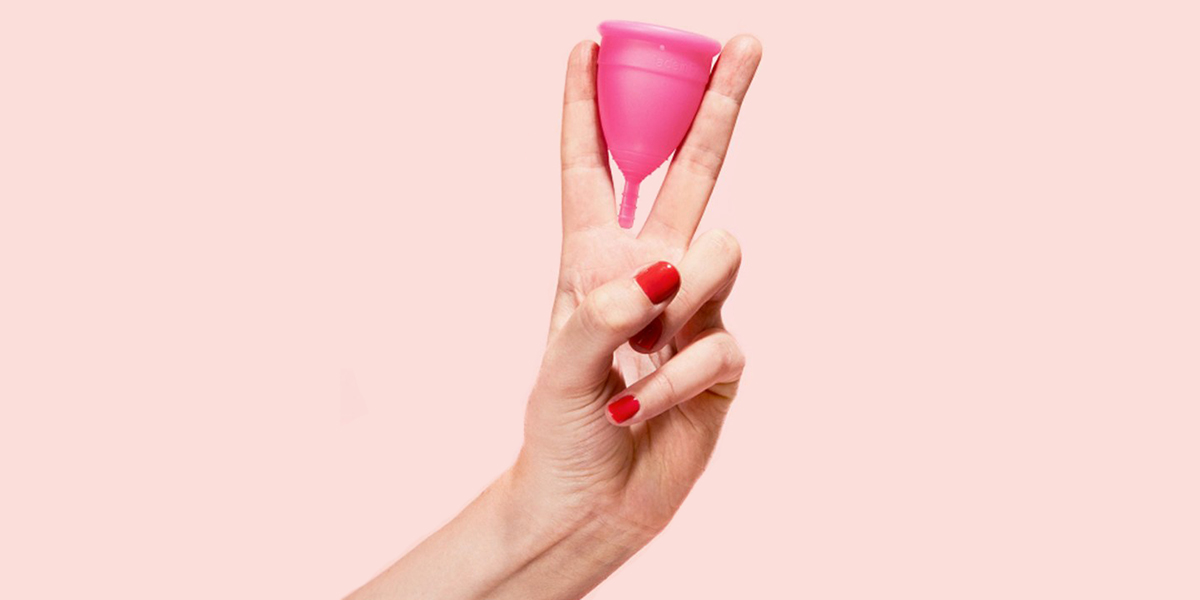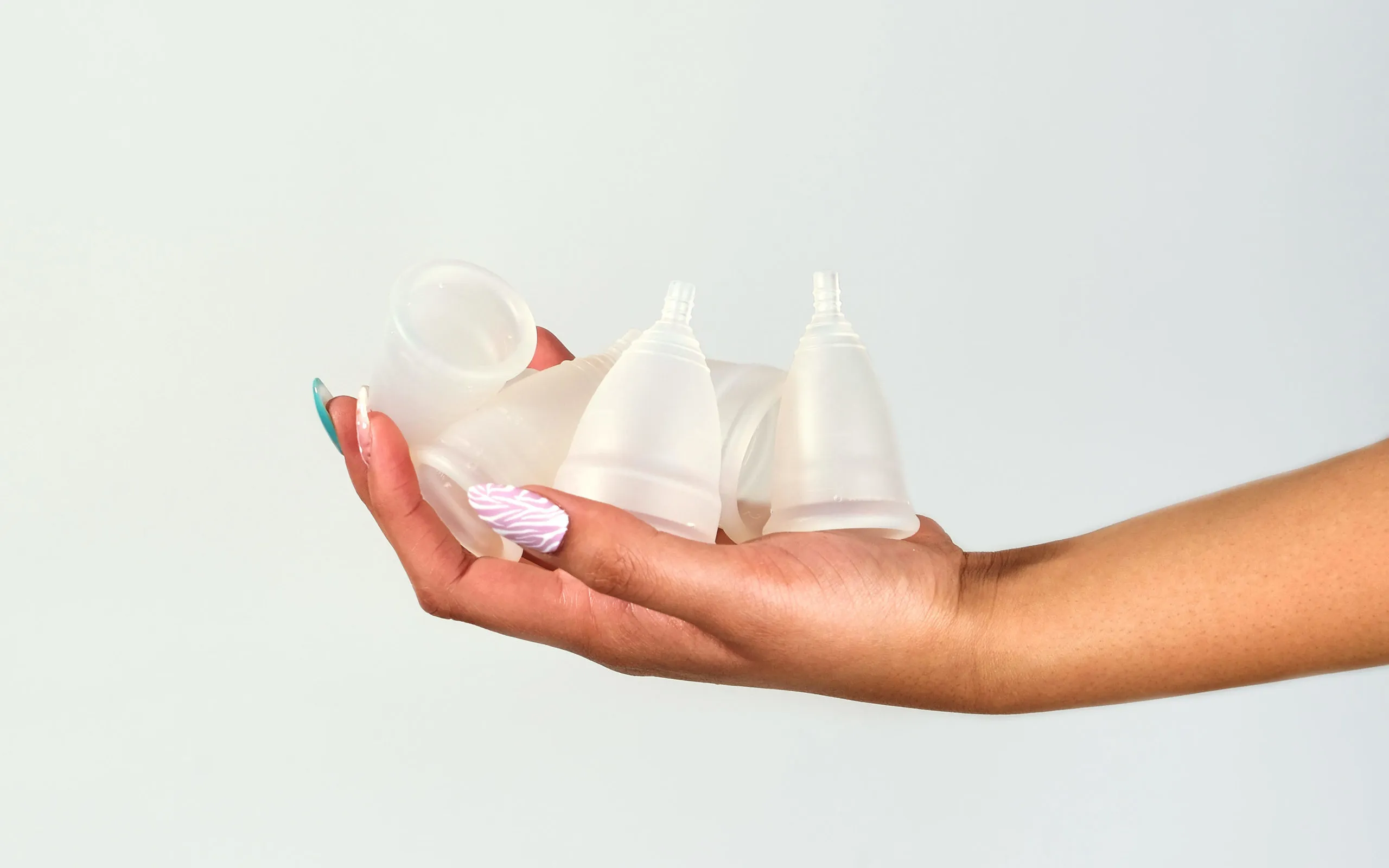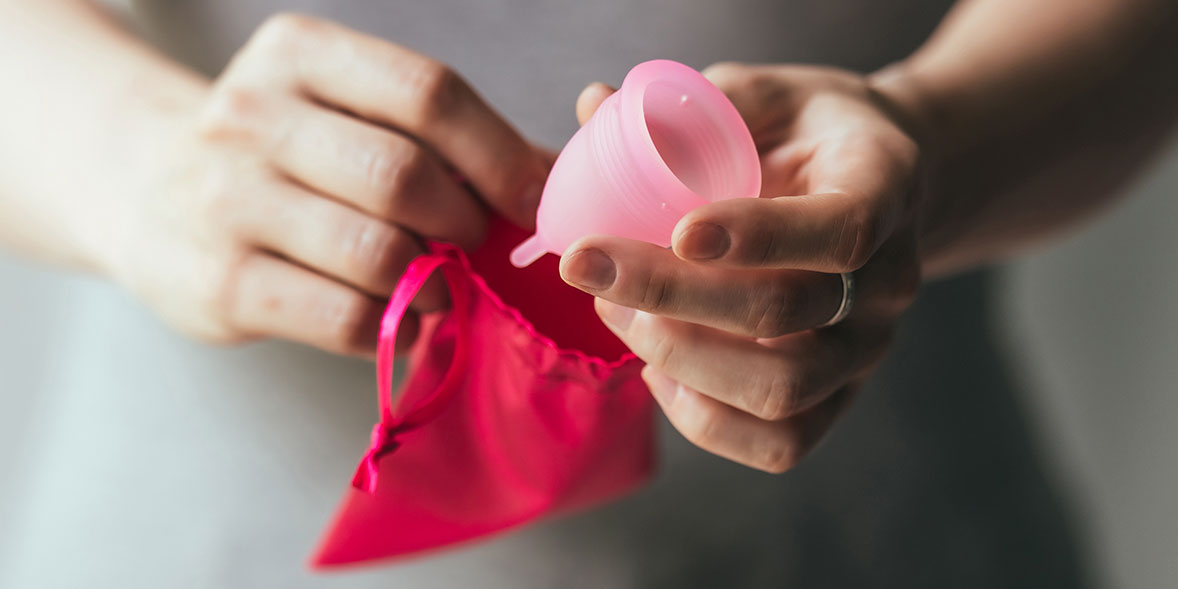Menstrual cups have gained a loyal following of passionate enthusiasts, but there are still many who have only heard about them in passing and may hold misconceptions. While these misconceptions aren’t intentionally spread, they can create unnecessary confusion and doubt. That’s why we’ve reached out to Dr. Nupur Gupta, a renowned expert in obstetrics and gynecology, to shed some light on the common myths surrounding menstrual cups. So, let’s debunk these myths and empower you with accurate information about this revolutionary period care option.
Contents
- 1 Common Myths about Menstrual Cups
- 2 Myth: Menstrual Cups are Painful/Uncomfortable
- 3 Myth: Cleaning a Cup Is Awkward
- 4 Myth: Menstrual Cups Cause Health Issues
- 5 Myth: You can’t use a menstrual cup if you’re a virgin or have never inserted a tampon before
- 6 Myth: Using a Menstrual Cup Eliminates the Risk of Toxic Shock Syndrome (TSS)
- 7 Myth: Menstrual cups can cause prolapse
- 8 Myth: You Should Replace Your Menstrual Cup Yearly
- 9 Myth: Your Menstrual Cup Can Get Lost Inside the Vagina
- 10 Myth: You Can’t Use the Washroom When Wearing a Menstrual Cup
- 11 Myth: Someone With a Heavy Period Can’t Use a Menstrual Cup
- 12 Myth: You Can’t Sleep While Wearing a Menstrual Cup
- 13 Myth: You Can’t Exercise While Wearing a Menstrual Cup
- 14 Myth: You Can’t Swim While Wearing a Menstrual Cup
- 15 Myth: When the Cup is Full, the Blood Flows Back into the Uterus
- 16 Myth: You don’t need to boil your menstrual cup after every cycle
- 17 Myth: All Menstrual Cups Are Plastic-Free
- 18 Conclusion
Common Myths about Menstrual Cups

There are several myths surrounding menstrual cups that can create doubt or discomfort for women considering this period care option. Let’s debunk some of these common misconceptions and provide accurate information to help you make an informed decision.
Myth: Menstrual Cups are Painful/Uncomfortable
Let’s address the common myth that menstrual cups are painful or uncomfortable to use. Many women believe that using a menstrual cup will cause discomfort or even pain during their period. However, this is simply not true.
Fact: Menstrual cups are designed with your comfort in mind. They are made from soft, flexible materials, such as medical-grade silicone, which allows for easy insertion and removal. The cup is designed to sit low in the vaginal canal, making it virtually undetectable when inserted correctly.
Some women may experience some initial discomfort or unfamiliarity during their first few uses, but this is completely normal and usually goes away with practice. It’s important to remember that our bodies are unique, and it may take some time to find the right fit and positioning for your cup.
Fact: Menstrual cups are not meant to cause pain or discomfort. In fact, many women find them to be more comfortable than traditional menstrual products, such as tampons or pads. Cups collect the menstrual flow instead of absorbing it, which eliminates the dryness and irritation that can occur with tampons.
Using a water-based lubricant can also help with insertion and increase your comfort level. Remember, it’s essential to follow the instructions provided by the cup manufacturer to ensure proper insertion and removal.
Menstrual cups are not painful or uncomfortable when used correctly. They are designed to provide comfort and convenience during your period. Don’t let this myth deter you from trying this eco-friendly and cost-effective option for menstrual care.
Myth: Cleaning a Cup Is Awkward
Cleaning a menstrual cup is often perceived as a daunting task by many women. However, this is just another myth that needs to be debunked. The truth is, cleaning a cup is actually quite simple and straightforward. Let’s address this myth and provide you with accurate information about cleaning your menstrual cup.
Fact 1: Cleaning a menstrual cup is quick and easy. Contrary to popular belief, cleaning a cup is not a complicated or time-consuming process. All you need to do is remove the cup, empty the contents into the toilet or sink, rinse it with water, and then reinsert it. It’s as simple as that! You can also use a mild, fragrance-free soap to give it a thorough clean if desired. Remember to always follow the manufacturer’s instructions for cleaning your specific cup.
Fact 2: Menstrual cups are more hygienic than other menstrual products. One of the greatest advantages of using a menstrual cup is its hygiene factor. Unlike tampons and pads, which can harbor bacteria and cause unpleasant odors, menstrual cups are made from medical-grade silicone or latex that is non-porous and can be sterilized. This means that you can thoroughly clean and sanitize your cup between uses, ensuring a higher level of cleanliness and reducing the risk of infections.
Fact 3: Menstrual cups do not require frequent emptying. Another misconception is that you have to empty your cup frequently, making it inconvenient. In reality, menstrual cups can be worn for up to 12 hours, depending on your flow. This means that you can go about your day without worrying about constantly emptying and changing your menstrual product. However, it is important to note that you should still empty your cup regularly to maintain optimal hygiene and prevent leaks.
Myth: Menstrual Cups Cause Health Issues

Many women have concerns about the safety of using menstrual cups and worry that they may cause health issues. However, it is important to separate fact from fiction when it comes to this topic. Let’s debunk the myth that menstrual cups cause health problems.
Fact: Menstrual cups are safe and do not increase the risk of infections or toxic shock syndrome (TSS). Unlike tampons, which can absorb and trap moisture, menstrual cups collect menstrual fluid without drying out the vagina. This helps maintain a healthy pH balance and reduces the risk of bacterial or fungal infections. In fact, a study published in the Journal of Women’s Health found that menstrual cups are as safe and effective as tampons in terms of TSS risk.
Fact: Menstrual cups are made from medical-grade silicone or latex-free materials, which are hypoallergenic and safe for most women. If you have latex allergies, make sure to choose a cup made from silicone or other non-latex materials. It is important to follow the manufacturer’s instructions for sterilizing and cleaning your cup to ensure proper hygiene.
Fact: Menstrual cups are suitable for women of all ages and reproductive histories. Whether you are a teenager, have never given birth, or have had multiple pregnancies, there is a cup that can accommodate your needs. Cup sizes vary to accommodate different levels of flow and cervix positions, so you can find the perfect fit for your body.
Fact: Menstrual cups do not cause discomfort or pain when used correctly. They are designed with your comfort in mind and are often more comfortable than traditional menstrual products. With their flexible and soft material, cups can be inserted and removed easily without any discomfort or irritation.
Remember, it is always important to choose a reputable brand and follow the instructions for proper use and care. By debunking the myth that menstrual cups cause health issues, we hope to provide you with accurate information to make an informed decision about this period care option.
Myth: You can’t use a menstrual cup if you’re a virgin or have never inserted a tampon before
Contrary to popular belief, being a virgin or never having used a tampon before does not prevent you from using a menstrual cup. Menstrual cups are designed to be suitable for women of all ages and reproductive histories.
By debunking the myth that you can’t use a menstrual cup if you’re a virgin or have never inserted a tampon before, we hope to empower women to make informed choices about their period care options.
Myth: Using a Menstrual Cup Eliminates the Risk of Toxic Shock Syndrome (TSS)
Many women believe that using a menstrual cup eliminates the risk of Toxic Shock Syndrome (TSS). However, this is a common misconception. While it is true that the risk of TSS is generally lower with menstrual cups compared to tampons, it is essential to understand that the risk still exists.
TSS is a rare but serious condition caused by the release of toxins produced by certain strains of bacteria. It can occur in both men and women and is not exclusive to menstruation or menstrual product use. Using any internal menstrual product, including menstrual cups, can potentially increase the risk of TSS if not used properly.
It’s important to note that the materials used in menstrual cups, such as medical-grade silicone or latex, are generally less conducive to bacterial growth compared to the materials used in tampons. Additionally, menstrual cups do not absorb menstrual fluid but collect it, reducing the risk of bacteria growth. However, this does not mean that the risk of TSS is completely eliminated.
To minimize the risk of TSS when using a menstrual cup, it is crucial to follow proper hygiene practices. This includes washing your hands before and after inserting or removing the cup, sterilizing the cup between cycles, and emptying the cup regularly according to the manufacturer’s instructions. It’s also essential to inspect the cup for any signs of damage or deterioration and replace it as needed.
If you experience any symptoms of TSS, such as sudden fever, rash, muscle aches, or dizziness, it is crucial to remove the cup immediately and seek medical attention. Remember, TSS is a rare condition, and the risk can be minimized by using menstrual cups correctly and following good hygiene practices.
While menstrual cups may reduce the risk of TSS compared to tampons, it is crucial to understand that the risk is not completely eliminated. By using menstrual cups properly and practicing good hygiene, you can help minimize the risk and enjoy the benefits of this period care option.
Myth: Menstrual cups can cause prolapse
There is a common myth that using a menstrual cup can lead to prolapse, a condition where the pelvic organs descend from their normal positions. However, this myth is not supported by scientific evidence.
Prolapse occurs when the pelvic floor muscles weaken, causing organs such as the bladder, uterus, or rectum to sag or drop. It is typically caused by factors such as pregnancy and childbirth, aging, obesity, chronic coughing, or heavy lifting.
Using a menstrual cup does not put any additional strain on the pelvic floor muscles compared to other menstrual products. In fact, menstrual cups are made from flexible and hypoallergenic materials that conform to the body’s shape, providing a comfortable fit without causing any undue pressure on the pelvic organs.
It is important to note that the risk of prolapse is not exclusive to menstrual cup users and can affect any woman. To reduce the risk of prolapse, it is advisable to maintain a healthy lifestyle, including regular exercise to strengthen the pelvic floor muscles, maintaining a healthy weight, and avoiding activities that put excessive strain on the pelvic area.
The myth that menstrual cups can cause prolapse is unfounded. Using a menstrual cup does not pose any additional risk for developing prolapse compared to using other menstrual products. It is important to debunk these myths and provide accurate information to ensure that women can make informed decisions about their menstrual care.
Myth: You Should Replace Your Menstrual Cup Yearly

One common myth surrounding menstrual cups is that you need to replace them every year. This misconception may stem from the fact that other period care products, such as tampons or pads, have a limited lifespan. However, menstrual cups are different. They are made from high-quality medical-grade silicone or latex and are designed to be durable and long-lasting.
In reality, with proper care and maintenance, a menstrual cup can last for several years, saving you money and reducing waste. It is important to follow the manufacturer’s instructions for cleaning and storing your cup to ensure its longevity.
Some signs that may indicate it’s time to replace your menstrual cup include:
- Visible signs of wear and tear: Check for any tears, cracks, or discoloration on the cup. These can affect the cup’s performance and hygiene.
- Changes in flexibility: Over time, the cup may become less flexible, making it less comfortable to insert and remove. If you notice a significant change in flexibility, it may be time for a new cup.
- Persistent odors: Despite proper cleaning, a cup that retains an unpleasant odor even after thorough washing may indicate that it’s time to replace it.
Remember, good hygiene practices are essential in maintaining the longevity of your menstrual cup. Wash your hands before handling the cup, rinse it thoroughly with water after each use, and sterilize it between cycles as recommended by the manufacturer.
By debunking the myth that you need to replace your menstrual cup yearly, we hope to empower women to make informed choices about their period care. Invest in a high-quality cup, take proper care of it, and enjoy the cost-effectiveness and eco-friendliness of this sustainable period option.
Myth: Your Menstrual Cup Can Get Lost Inside the Vagina
One common misconception about menstrual cups is the fear that they can get lost inside the vagina. Rest assured, this is a myth.
Fact: Menstrual cups cannot get lost or stuck inside the body.
The design of menstrual cups ensures that they are secure and easy to remove. The cup sits at the base of the vagina, forming a seal against the vaginal walls. It may take some practice to find the most comfortable position and angle for insertion and removal, but with a little patience, it becomes second nature.
Some women worry that the cup can travel too far up the vaginal canal, making it difficult to retrieve. However, the cervix, which marks the entrance to the uterus, acts as a natural barrier, preventing the cup from going any further. It’s important to remember that the cervix has a small opening, allowing menstrual blood to flow out, but it is not large enough for the cup to pass through.
If you ever have difficulty removing your menstrual cup, do not panic. Simply relax your muscles, gently grasp the base of the cup, and gently squeeze to break the seal. With a slight wiggle and steady downward motion, you can easily remove the cup.
In rare cases where the cup seems difficult to remove, it may be due to strong pelvic floor muscles or a high cervix. In such cases, it’s recommended to consult with your healthcare provider for guidance.
So, rest assured that your menstrual cup will not get lost inside your body. It’s designed to be secure, comfortable, and easy to use.
Myth: You Can’t Use the Washroom When Wearing a Menstrual Cup
One common myth about menstrual cups is that you can’t use the washroom while wearing them. However, this couldn’t be further from the truth. You can absolutely use the washroom while wearing a menstrual cup. In fact, it’s just as easy and convenient as with any other menstrual product.
When you need to urinate, simply relax your pelvic floor muscles and gently remove the cup. Empty the contents into the toilet, rinse the cup with water if necessary, and then reinsert it. It’s as simple as that. You don’t have to worry about removing the cup every time you need to use the washroom, as it doesn’t interfere with your urinary functions.
Similarly, when it comes to bowel movements, you can still use the washroom without any issues. The cup sits low in the vaginal canal, far away from the rectum and anus, so it won’t interfere with the natural process of eliminating waste. You can safely and comfortably have a bowel movement while wearing a menstrual cup.
It’s important to remember that menstrual cups are designed to be worn for up to 12 hours, depending on your flow. They are made from medical-grade silicone or rubber, which is flexible and bends with your body. This means that you won’t feel any discomfort or obstruction when using the washroom.
The myth that you can’t use the washroom while wearing a menstrual cup is completely false. You can use the washroom normally and comfortably with a menstrual cup. It’s just one of the many benefits of using this eco-friendly and cost-effective period care option. So, say goodbye to the inconvenience of frequent pad or tampon changes and embrace the freedom and convenience of a menstrual cup.
Myth: Someone With a Heavy Period Can’t Use a Menstrual Cup
Contrary to popular belief, having a heavy period does not mean that you can’t use a menstrual cup. This is a common myth that often discourages women with heavy flows from considering this period care option. However, it’s important to understand that menstrual cups are designed to accommodate different flow levels, including heavy periods.
One of the key advantages of menstrual cups is their high capacity. Most menstrual cups can hold significantly more fluid than traditional tampons or pads. For example, a standard menstrual cup can hold up to 1 ounce (30 ml) of menstrual fluid, which is roughly equivalent to 2-3 super tampons. Some larger-sized cups can hold even more.
The high capacity of menstrual cups means that they can handle heavy flows without the need for frequent changes. This not only provides convenience but also helps reduce the environmental impact of disposable menstrual products. You can wear a menstrual cup for up to 12 hours before emptying it, depending on your flow. This makes it a suitable option for women with heavy periods who may experience rapid filling of tampons or pads.
Furthermore, the flexible and leak-proof design of menstrual cups ensures that they can effectively handle heavy flows without any leakage or discomfort. The cup forms a seal against the vaginal walls, preventing any leaks or accidents. With proper insertion and positioning, you can confidently go about your day without worrying about leaks, even with a heavy period.
It’s worth noting that the size and shape of menstrual cups can vary, so it’s important to choose one that is suitable for your individual needs. Some cups are specifically designed for women with heavy flows and offer larger capacities. By selecting the right cup size and shape, you can find a menstrual cup that provides reliable protection and comfort, regardless of your flow level.
Having a heavy period does not mean that you can’t use a menstrual cup. These cups are designed to accommodate different flow levels, including heavy periods. Their high capacity, leak-proof design, and flexibility make them a suitable and reliable option for women with heavy flows. Don’t let this myth discourage you from exploring the benefits of menstrual cups for managing your period.
Myth: You Can’t Sleep While Wearing a Menstrual Cup
One common myth surrounding menstrual cups is that you can’t sleep while wearing one. However, this is simply not true. Menstrual cups are designed to be worn for up to 12 hours at a time, which includes overnight. In fact, many women find that using a menstrual cup while sleeping is not only comfortable but also provides them with leak-free protection throughout the night.
The misconception that wearing a menstrual cup while sleeping is uncomfortable or unsafe may stem from a lack of understanding about how menstrual cups work. Unlike tampons, which can cause dryness and irritation if left in for too long, menstrual cups are made of medical-grade silicone or latex-free materials that are safe to wear for extended periods. They are designed to collect menstrual fluid rather than absorb it, which helps maintain the natural moisture and balance of the vaginal environment.
Additionally, menstrual cups have a high capacity, meaning they can hold a significant amount of menstrual fluid without the need for frequent emptying. This makes them an excellent choice for overnight use, as they can provide long-lasting protection without the hassle of having to change a pad or tampon in the middle of the night.
It’s important to note that using a menstrual cup overnight does require some initial practice and finding the right positioning and insertion technique that works best for you. This may involve experimenting with different folds and angles to ensure a proper seal and comfortable fit. Once you’ve mastered the proper technique, you’ll likely find that wearing a menstrual cup during sleep is no different than wearing it during the day.
Remember, menstrual cups are a reliable and convenient period care option that can be worn while sleeping, providing you with peace of mind and uninterrupted rest. So put those worries to rest and enjoy a good night’s sleep with your menstrual cup.
Myth: You Can’t Exercise While Wearing a Menstrual Cup

Contrary to popular belief, you can absolutely exercise while wearing a menstrual cup. In fact, menstrual cups are designed to provide leak-free protection during physical activities and sports. Here are a few key points to debunk this myth:
1. Comfort and Flexibility: Menstrual cups are made from soft and flexible materials, such as medical-grade silicone, which allows them to move with your body during exercise. Unlike bulky pads or uncomfortable tampons, menstrual cups are virtually undetectable, providing a comfortable and secure fit.
2. Leak-proof Design: One of the main advantages of menstrual cups is their high capacity and leak-proof seal. This means that even during intense workouts or vigorous movements, the cup will stay in place and prevent any leaks or accidents. You can focus on your exercise routine with peace of mind.
3. Freedom of Movement: Whether you’re running, practicing yoga, swimming, or engaging in any other physical activity, you can move freely and confidently with a menstrual cup. Unlike tampons, which can shift or become uncomfortable during exercise, menstrual cups maintain their position and don’t require frequent adjustments.
4. Longer Wear Time: Another benefit of using a menstrual cup during exercise is the extended wear time. Unlike tampons, which need to be changed every few hours, menstrual cups can be worn for up to 12 hours. This means you can complete your workout without worrying about changing your protection.
5. Hygiene and Comfort: Menstrual cups are hygienic and easy to maintain, even during exercise. They can be emptied, rinsed, and reinserted as needed. Plus, since menstrual cups collect the flow rather than absorbing it, they help maintain the natural pH balance of your vagina, reducing the risk of irritation or infections.
So, don’t let the myth fool you – you can definitely exercise while wearing a menstrual cup. It offers comfort, flexibility, leak-proof protection, and the freedom to move without any worries. Give it a try and experience the convenience and confidence it provides during your workouts.
Myth: You Can’t Swim While Wearing a Menstrual Cup
Contrary to popular belief, you can swim while wearing a menstrual cup. This is one of the many misconceptions surrounding this period care option. Menstrual cups are designed to provide leak-free protection, even during physical activities such as swimming. Here are a few key points to debunk this myth:
- Waterproof: Menstrual cups are made of medical-grade silicone or other safe materials that are waterproof. They create a seal against the vaginal walls, preventing any leakage, even in water.
- Secure Fit: When inserted correctly, a menstrual cup forms a vacuum seal inside the vagina, ensuring that it stays in place during all types of movements, including swimming. You can have peace of mind knowing that your menstrual cup will not come out or leak while you’re in the water.
- No Absorption: Unlike tampons or pads, menstrual cups do not absorb the menstrual flow. Instead, they collect it, allowing you to swim without any worry of water saturation or leakage.
- Comfortable and Flexible: Menstrual cups are designed to be comfortable and flexible, allowing for easy movement. They do not interfere with your ability to swim or participate in any water-related activities.
It’s important to note that while swimming with a menstrual cup is safe and convenient, it’s essential to follow proper hygiene practices. Before and after swimming, make sure to wash your hands thoroughly. If you need to empty your cup while swimming, find a private area to do so and rinse it with clean water if necessary. Remember to always follow the manufacturer’s instructions for cleaning and storing your cup.
Myth: When the Cup is Full, the Blood Flows Back into the Uterus
One common myth surrounding menstrual cups is the belief that when the cup is full, the blood flows back into the uterus. This misconception stems from a misunderstanding of how menstrual cups work.
Contrary to this myth, menstrual cups are designed with a seal that prevents leakage and ensures that the blood stays inside the cup. The cup creates a gentle suction against the vaginal walls, forming a secure seal that keeps the blood from escaping.
The cup’s design and shape, along with its positioning inside the vagina, allow it to collect the menstrual flow without any backward flow. The cup is positioned low in the vaginal canal, below the cervix, to collect the blood as it is released from the uterus.
It’s important to note that menstrual cups have a higher capacity compared to other menstrual products, such as tampons or pads. This means that you’ll have more time before needing to empty the cup, even on heavier flow days. Most cups can hold up to 1 ounce (30 milliliters) of menstrual fluid, which is significantly more than the average amount of blood lost during a menstrual cycle.
However, it’s important to be aware of your flow and to empty the cup regularly, especially during heavier days. This will help prevent overflow and ensure that the cup remains effective in collecting the menstrual flow.
Remember, there is no risk of the blood flowing back into the uterus when using a menstrual cup. The cup’s seal and proper positioning work together to provide leak-free protection and keep the blood securely contained.
Next, let’s move on to another myth surrounding menstrual cups.
Myth: You don’t need to boil your menstrual cup after every cycle
It is a common misconception that you don’t need to boil your menstrual cup after every cycle. However, this is not true. Boiling your menstrual cup after each cycle is an essential step in maintaining its cleanliness and hygiene.
Boiling your menstrual cup helps to kill any bacteria or germs that may be present on the cup. It is recommended to boil your cup for about 5-10 minutes. This ensures that any harmful organisms are eliminated, reducing the risk of infections or other health issues.
Additionally, boiling your menstrual cup also helps to remove any residual odors that may develop over time. This is especially important if you have noticed any unpleasant smells coming from your cup. Boiling can effectively eliminate these odors and leave your cup smelling fresh and clean.
Some women may think that simply rinsing or washing their cup with soap and water is enough to keep it clean. While regular cleaning is important, it may not be sufficient to completely remove all bacteria and germs. Boiling is a more thorough method of sterilization and should be done regularly to ensure the highest level of cleanliness.
It’s important to note that not all menstrual cups are safe to boil. Some cups may be made of materials that can be damaged by boiling water. Always check the manufacturer’s instructions for proper cleaning and sterilization methods. If boiling is not recommended, there are alternative methods, such as using special cup cleaning solutions or wipes.
Boiling your menstrual cup after every cycle is a crucial step in maintaining its cleanliness and hygiene. It helps to eliminate bacteria, germs, and odors, ensuring that your cup remains safe and comfortable to use. Remember to always follow the manufacturer’s instructions for proper cleaning and sterilization methods to prolong the lifespan of your cup and ensure its effectiveness.
Myth: All Menstrual Cups Are Plastic-Free

Many people believe that all menstrual cups are plastic-free, but this is actually a myth. While there are menstrual cup options made from medical-grade silicone, which is a safe and hypoallergenic material, not all cups are completely plastic-free.
It’s important to understand that the term “plastic-free” can be misleading. Some menstrual cups may have a silicone body, but the stem or the packaging may contain small amounts of plastic. This doesn’t necessarily mean that the cup is unsafe or harmful, but it’s crucial to read the product labels and do proper research to make an informed decision.
When choosing a menstrual cup, it’s essential to look for reputable brands that prioritize sustainability and use high-quality materials. Many well-known menstrual cup brands offer cups that are free from harmful chemicals such as BPA, phthalates, and latex. These cups are designed to be safe, comfortable, and eco-friendly.
If you’re specifically looking for a plastic-free option, there are menstrual cups available that are made from alternative materials like natural rubber or TPE (thermoplastic elastomer). These cups are a great choice for individuals who are conscious about reducing their plastic consumption.
It’s important to note that regardless of the material, it’s essential to follow the manufacturer’s instructions for cleaning and care to maintain hygiene and prolong the life of your cup. Proper cleaning and storage practices are crucial to ensure the cup remains safe and effective.
While there are menstrual cup options that are plastic-free, not all cups fall into this category. It’s vital to read product labels, do thorough research, and choose a reputable brand that aligns with your personal values and preferences. Remember, the key is to find a menstrual cup that suits your needs, offers comfort, and promotes sustainability.
Conclusion
Now that you have been provided with accurate information and debunked the top 10 myths surrounding menstrual cups, you can make an informed decision about this period care option.
I am a medical student with experience and interest in Women’s health and well-being.